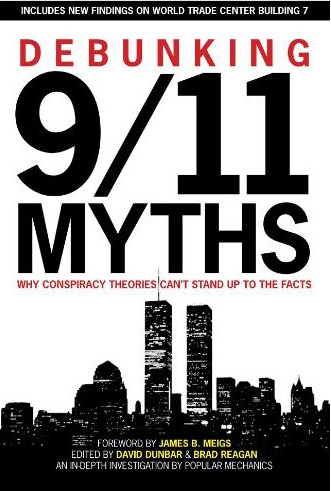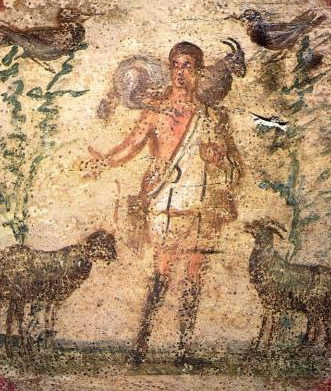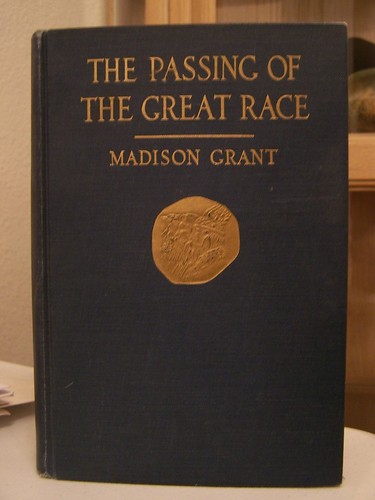Ever since in an article of a white nationalist blogsite I was called “a Jew” and that my “behavior indicates that he’s a Jew” (by “behavior” the author meant my criticism of the truther movement), I realized that truthers suffer from huge psychological issues. For example, a commenter in that article’s thread who has the Truth Movement as a sort of litmus test for what he believes is the true nationalist, stated that the other “‘WN’ bloggers… are probably posting from Tel Aviv.”
While demonstrating that I am not a Jew is quite easy in these times of DNA tests, what I found disturbing is the notion that those who strongly disagree with truthers must be Jews, or even conspiracists themselves.
The following excerpts, taken from James B. Meigs’ foreword and afterword of Debunking 9/11 Myths corroborate that truthers are a little paranoid to say the least. Meigs is, technically, our foe—he writes as if “racism” and “anti-Semitism” were something wrong. Nonetheless, I find his arguments demystifying conspiracy theories compelling (no ellipsis added):

Foreword
Popular Mechanics set out to investigate conspiracy theories about the 9/11 attacks in late 2004, just as those claims were emerging from the swamps of extremist websites and radical Islamist organizations. We had no idea how much trouble we were about to stir up. Our first magazine article on the topic, which appeared in the March 2005 issue, closely examined the major scientific, military, aeronautical, and engineering-based claims commonly cited as evidence that 9/11 was, as conspiracy theorists like to say, an inside job. Our investigation found no evidence in support of the conspiracy claims.
The article unleashed a flood of criticisms and accusations from those supporting such theories. These attacks ranged from the preposterous (it was said our magazine had published this investigation on orders from a cabal of Masons and Illuminati) to alarming (death threats were referred to our security department). Clearly, we had touched a nerve. The article quickly became the most widely read story in the history of Popular Mechanics’ Web site, with over 7.5 million views. (A detailed account of the reaction to our article, and what that reaction says about the conspiracy movement, can be found in the original afterword to this book on page 121 [see below].)
A team of Popular Mechanics reporters and editors then started work on a far more detailed book-length version of the report. By the time the first edition of this book was published in the summer of 2006, the 9/11 conspiracy furor was reaching a tipping point. The flurry of books on the topic had grown into an avalanche, with certain writers, such as former Claremont School of Theology professor David Ray Griffin, building a thriving cottage industry around the topic. Conspiracy fans had, with Orwellian overtones, taken to calling themselves “the 9/11 Truth Movement,” or simply “truthers.” Extremist talk radio programs such as The Alex Jones Show pushed the issue nonstop. And a video pastiche of conspiracy theories, a quasi-documentary known as Loose Change, was becoming an Internet sensation.
Popular Mechanics’ 9/11 project represented one of the relatively few attempts by mainstream journalists to grapple seriously with the conspiracy theory claims. So it was telling that most conspiracy theorists quickly decided that Popular Mechanics too was part of the conspiracy. In their minds, all our research could therefore be rejected a priori. We had run head on into a worldview that some experts call “conspiracism.” It is a mind-set that insists on reaching a predetermined conclusion regardless of what information is presented. Any facts that don’t fit the conspiracy paradigm need to be explained away. Since 2004, leading 9/11 theorist David Ray Griffin has written seven books and edited two others on the subject of 9/11. He devoted a chapter in his book, Debunking 9/11 Debunking: An Answer to Popular Mechanics and Other Defenders of the Official Conspiracy Theory, to explain why, in his view, the 9/11 reporting by Popular Mechanics and other mainstream journalists is invalid.
Griffin’s book devotes many pages to the idea that Popular Mechanics and our parent company, the Hearst Corporation, are somehow implicated in the vast conspiracy he sees behind 9/11. He digs up century-old controversies and finds tenuous links between the magazine’s staff and various government officials. But he never explains how a magazine—much less a major corporation—could possibly convince its employees to help cover up the most notorious mass murder in our nation’s history. Popular Mechanics has close to 30 editorial staffers and dozens of freelance contributors. Does Griffin imagine that whenever we hire new editors I bring them into a secret bunker and initiate them into an ultraclandestine society for world domination? Why wouldn’t such prospective employees run screaming from our building? In the years since we began our work on 9/11 conspiracy theories, a number of our staffers have moved on to other jobs. What would stop them from revealing a conspiracy that, if true, would be one of the biggest journalistic scoops in history? Did we swear them all to lifetime secrecy? As with so many conspiracy claims, the whole elaborate fantasy becomes practically laughable on close examination.
The original Popular Mechanics article addressed 16 of the most common 9/11 conspiracy claims. The first edition of this book expanded that list by four, and added much more detail. As a result, many of the more adept theorists simply moved on to new theories, or shifted their focus to issues that our team had not covered as deeply. For example, at the time we published the first edition, there was still no definitive account of why World Trade Center 7—which was not hit by planes, only damaged by debris—also collapsed. Not surprisingly, as the truther community moved away from talk about missiles and pods, it began focusing obsessively on elaborate theories concerning WTC 7. (With the benefit of much more detailed engineering analysis, this edition addresses—and debunks—those WTC 7 claims in depth.)
It is hard to argue without facts. And yet that is the position in which 9/11 conspiracists increasingly find themselves. One by one, the key factual underpinnings of their theories have been demolished. But still they argue on, their passionate conviction undiminished.
In the end, the truther community’s tendency toward unintentional self-parody has perhaps done as much to undermine its credibility as has the work of Popular Mechanics. Just when the conspiracy movement seemed to be making real headway toward deeply influencing American culture, a funny thing happened: it began to turn into a punch line. South Park offered a brutal parody of the conspiracist worldview in an episode called “Mystery of the Urinal Deuce.” Comedian Jon Stewart started tweaking truthers on The Daily Show, at one point holding up a sign reading “9/11 WAS AN OUTSIDE JOB.” And, in a common-sense answer to the vast legion of conspiracy-oriented websites, an assortment of sharp, and often satirical, blogs has emerged to challenge the truthers on their own turf. In particular, the blog Screw Loose Change offers devastating analysis of the truther community, and links to point-by-point rebuttals to the claims advanced in Loose Change.
Of course, conspiracy theories involving 9/11 will never fully go away. And a book like this, no matter how widely reported or carefully updated, will never convince the most dedicated conspiracists. But, on the eve of the tenth anniversary of the September 11 attacks, it is important to have a clear, objective, and thorough response to the consistently false and deeply malicious claims of the conspiracy movement.
New York City
2011
Afterword
On February 7, 2005, I [James Meigs] became a member of the Bush/Halliburton/Zionist/CIA/New World Order/Illuminati conspiracy for global domination. It was on that day the March 2005 issue of Popular Mechanics, with its cover story debunking 9/11 conspiracy theories, hit newsstands. Within hours, the online community of 9/11 conspiracy buffs—which calls itself the “9/11 Truth Movement”—was aflame with wild fantasies about me and my staff, the magazine I edit, and the article we had published.
We had begun our plunge down the rabbit hole. Within hours, a post on www.portland.indymedia.org, which claims to be dedicated to “radical, accurate, and passionate tellings of truth,” called me “James Meigs the Coward and Traitor.” Not long afterward, another prominent conspiracy theorist produced an analysis that concluded that Popular Mechanics is a CIA front organization. Invective and threats soon clogged the comments section of our Web site and poured in by e-mail:
YOU HAVE DECLARD YOURSELF ENEMY OF AMERICANS AND FRIEND OF THE MOSSAD!
In a few short weeks, Popular Mechanics had gone from being a 100-year-old journal about science, engineering, car maintenance, and home improvement to being a pivotal player in a global conspiracy on a par with Nazi Germany. Not all the responses were negative, of course. One visitor to our Web site, after plowing through dozens of angry comments, left a supportive post that included this astute observation:
Some people are open to any possibility, and honestly examine all evidence in a rational manner to come to a conclusion, followed by a moral evaluation. Others start with a desire for a specific moral evaluation, and then work backwards assembling any fact that supports them, and dismissing any fact that does not.
As the hate mail poured in and articles claiming to have debunked the magazine’s analysis proliferated online, we soon learned to identify the key techniques that give conspiracy theorists their illusion of coherence.
Marginalization of Opposing Views
The 9/11 Truth Movement invariably describes the mainstream account of 9/11 as the “government version” or “the official version.” In fact, the generally accepted account of 9/11 is made up of a multitude of sources: thousands of newspaper, TV, and radio reports produced by journalists from all over the world; investigations conducted by independent organizations and institutions, including the American Society of Civil Engineers, Purdue University, Northwestern University, Columbia University, the National Fire Protection Association, and Underwriters Laboratories, Inc.; eyewitness testimony from literally thousands of people; recordings and transcripts of phone calls, air traffic control transmissions, and other communications; thousands of photographs; thousands of feet of video footage; and, let’s not forget the words of Osama bin Laden, who discussed the operation in detail on more than one occasion, including in an audio recording released in May 2006 that said: “I am responsible for assigning the roles of the 19 brothers to conduct these conquests…”
The mainstream view of 9/11 is, in other words, a vast consensus. By presenting it instead as the product of a small coterie of insiders, conspiracists are able to ignore facts they find inconvenient and demonize people with whom they disagree.
Argument by Anomaly
In an article about the Popular Mechanics 9/11 report, Scientific American columnist Michael Shermer makes an important observation about the conspiracist method: “The mistaken belief that a handful of unexplained anomalies can undermine a well-established theory lies at the heart of all conspiratorial thinking (as well as creationism, Holocaust denial [Post-script note of 2018: Presently I don’t believe this belongs to conspiratorial thinking] and the various crank theories of physics). All the ‘evidence’ for a 9/11 conspiracy falls under the rubric of this fallacy.”
A successful scientific theory organizes masses of information into a coherent, well-tested narrative. When a theory has managed to explain the real world accurately enough for long enough, it becomes accepted as fact. Conspiracy theorists, Shermer points out, generally ignore the mass of evidence that supports the mainstream view and focus strictly on tiny anomalies. But, in a complex and messy world, the fact that there might be a few details we don’t yet understand should not be surprising.
A good example is the conspiracist fascination with the collapse of 7 World Trade Center. Since the 47-story tower was not hit by an airplane, only by the debris of the North Tower, investigators weren’t sure at first just how or why it collapsed hours after the attacks. A scientist (or for that matter, a journalist or historian) might see that gap in our knowledge as an opportunity for further research (see “WTC 7: Fire and Debris Damage,” page 53). In the conspiracy world, however, even a hint of uncertainty is a chance to set a trap. If researchers can’t “prove” exactly how the building fell, they say, then there is only one other possible conclusion: Someone blew it up.
♣
My comment:
Meigs’ afterword goes on for other ten pages but the excerpts quoted above give the picture: a psychological analysis of the truther mentality goes to the core to understand the movement. For instance, this “Someone blew WTC 7 up” is exactly what I call “paleologic” modes of mentation, and illustrated it with a classic example by a psychiatrist: “If the Greeks are afflicted by epidemics, it is because Phoebus wants to punish Agamemnon.” (“Paleologism” is the subject of some chapters of my book.)
Re the Scientific American statement about “holocaust denial” cited above even Mark Weber, a revisionist historian and current director of the Institute for Historical Review (IHR) who has authored over a hundred articles relating to holocaust claims, has acknowledged that “it cannot be disputed” that “millions [of Jews] were forced from their homes; millions lost their lives” (listen the April 25, 2012 “Mark Weber Report: Holocaust Deceit, Remembrance and Reality”).
Contrary to what WN truthers claim, I believe that rejecting 9/11 conspiracy theories, and seriously considering the new approach to holocaust studies represented by Irmin Vinson, Mark Weber and David Irving are the mark of the mature nationalist.
 Johnson also included an essay of James in another book, the compilation of CC essays that has been released today and that contains no essay coming from the pen of the one who, in my opinion, was the best thinker among the writers that Johnson published in 2009-2011: Michael O’Meara.
Johnson also included an essay of James in another book, the compilation of CC essays that has been released today and that contains no essay coming from the pen of the one who, in my opinion, was the best thinker among the writers that Johnson published in 2009-2011: Michael O’Meara. Who are the “warriors in rainbow thongs”? When James linked Johnson’s interview in his blog, he used a pic of a transvestite under the title “Shameless Public Posturing.” I guess James is trying to say that there’s nothing wrong with such posturing.
Who are the “warriors in rainbow thongs”? When James linked Johnson’s interview in his blog, he used a pic of a transvestite under the title “Shameless Public Posturing.” I guess James is trying to say that there’s nothing wrong with such posturing. The Wild Boys is a novel about the violent world of homosexual renegade boys. It was authored by William Burroughs, a well-known writer who despite marrying a Jewess he picked up boys in steam baths and moved in a circle of homosexuals and runaways. Something analogous without the overt sexuality can be said about the grotesque cheering that, in the commentariat section of CC, Jef Costello got for his review of Fight Club: another nihilistic novel written by another homosexual.
The Wild Boys is a novel about the violent world of homosexual renegade boys. It was authored by William Burroughs, a well-known writer who despite marrying a Jewess he picked up boys in steam baths and moved in a circle of homosexuals and runaways. Something analogous without the overt sexuality can be said about the grotesque cheering that, in the commentariat section of CC, Jef Costello got for his review of Fight Club: another nihilistic novel written by another homosexual. This is the pic advertised in James’ “About Me” section of his blog. Does this look like a white nationalist to you?
This is the pic advertised in James’ “About Me” section of his blog. Does this look like a white nationalist to you?









